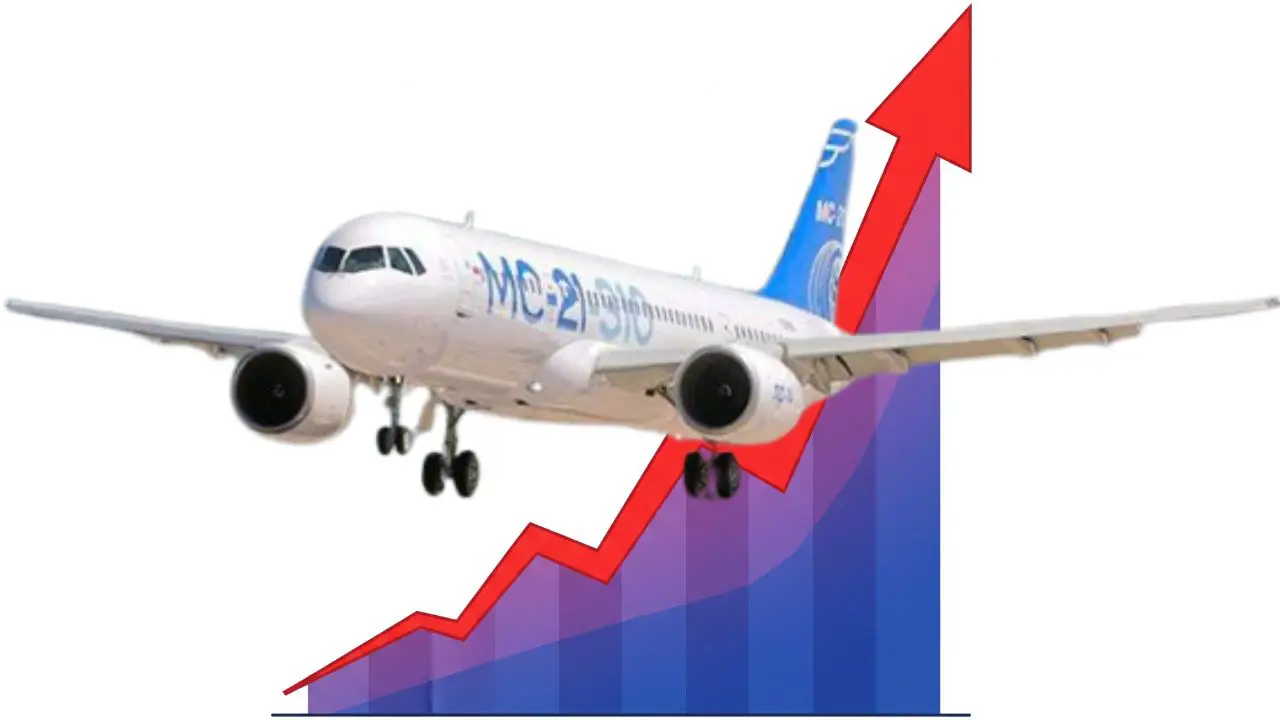Russian airlines and aviation enterprises have recently received updated pricing information for Russian aircraft scheduled for delivery in 2026 from the Department of State Policy in the Field of Civil Aviation of the Ministry of Transport of the Russian Federation. This price adjustment impacts all sectors of the domestic aviation industry, including medium-range airliners and regional turboprop aircraft. The modifications are indicative of the present economic conditions in Russia and represent a transitional phase for the civil aviation sector as it progresses toward the establishment of serial production capabilities and the substitution of large-scale imports.
A number of critical factors have contributed to the rise in aircraft prices. The recent increases in the Central Bank’s key interest rate, as well as the general economic climate in Russia, have resulted in an increase in costs. Furthermore, the substantial expenditures associated with import substitution initiatives have resulted in an increase in prices, as domestic manufacturers are obligated to replace previously imported components with locally produced alternatives. This trend is further exacerbated by the increasing costs of basic materials and avionics. Moreover, the maintenance and operation of foreign-made aircraft have been complicated by the sanctions imposed on Russia, which has resulted in an increase in the demand for domestically produced planes and an increase in their cost.
Substantial price increases have been observed for several of the main Russian aircraft models. For instance, the MC-21 airliner is currently priced at approximately 7.6 billion rubles (about $93 million), which represents a 65% increase from the 2023 estimates of 4.3 to 4.6 billion rubles (about $54–$58 million), excluding subsidies from the National Wealth Fund. The MC-21 is anticipated to complete the certification testing phase by the autumn of 2026. In the same vein, the regional turboprop Il-114-300 has experienced a price increase from 1.44 billion rubles (about $17.6 million) in 2023 to 2.6 billion rubles (about $32 million). It is important to note that the first three aircraft will be priced at approximately 4 billion rubles (about $49 million) each. Subsequent units are expected to be priced at 2.6 billion rubles (about $32 million), which will enable them to compete with foreign counterparts such as Bombardier and ATR aircraft. The price of the light multi-purpose LMS-901 “Baikal” aircraft has also increased, with an estimated price of 315 to 320 million rubles (about $3.9–$4 million), up from 178 million rubles (about $2.2 million) in 2023. The price was nearly reduced from an initial 455 million rubles (about $5.6 million) to approximately 260 million rubles (about $3.2 million) as a result of direct intervention by the President of Russia, Vladimir Putin. The American Cessna Grand Caravan is the main competitor of the Baikal, with a price range of 173 to 267 million rubles (about $2.1–$3.3 million), contingent upon configuration. It is anticipated that the LMS-901 will be certified by December 2026.
The cost of aircraft ownership is one of the most significant expenses for Russian airlines, and the increase in aircraft prices inevitably places additional financial strain on them. The State Transport Leasing Company (GTLK) is in the process of creating new operational and financial leasing models to alleviate this burden. These models are intended to minimize the immediate financial impact on carriers. These leasing schemes are proposed to be supported by financing from the National Wealth Fund over a 20-year period, with a two-year advance payment. Each term is seven to ten years, with an additional year designated for remarketing. Furthermore, domestic aircraft are eligible for a zero-rate value-added tax (VAT), which partially mitigates the rise in production expenses. The financial models that support these projects are designed to guarantee the return on investment of National Wealth Fund resources while simultaneously preserving its competitiveness with foreign aircraft in terms of the total cost of ownership, which encompasses continuous maintenance and airworthiness support.
From a strategic perspective, the present price increases should be perceived as a temporary phenomenon that is associated with the transitional phase of the Russian aviation industry’s development. It is anticipated that the cost of manufacturing these aircraft will decrease substantially as production volumes increase and technological processes improve. The modernization of the fleets maintained by Russian airlines is anticipated to be facilitated by Russian-made aircraft, including the MC-21, Il-114-300, and LMS-901. The objective is to achieve economic efficacy in aircraft operation by 2030 through government support programs and ongoing efforts to optimize production processes. The long-term competitiveness and position of Russia in the global civil aviation market will be significantly influenced by the success of these import substitution initiatives and the establishment of serial production.
Central to this transformation is the Ministry of Transport’s Department of State Policy in Civil Aviation. It is accountable for the development of tariff and pricing strategies, the analysis of the aviation sector’s performance, the preparation of proposals for infrastructure development and professional education in aviation, and the molding of state investment and innovation policies. The department’s endeavors are essential for guaranteeing that the domestic aviation industry can confront the obstacles presented by the present economic and geopolitical circumstances.
In summary, the current rise in the cost of Russian aircraft is indicative of the industry’s structural changes and the requisite transition to large-scale production of domestic aviation technology. Although this phase entails increased expenses, it is anticipated that it will lead to decreased manufacturing expenditures in the future, thereby establishing a sustainable and competitive segment within Russia’s civil aviation sector by 2030. This development will bolster Russia’s position in the global aerospace market and decrease its reliance on foreign aircraft manufacturers.
Official Website of Youtube Channel – Altitude Addicts
